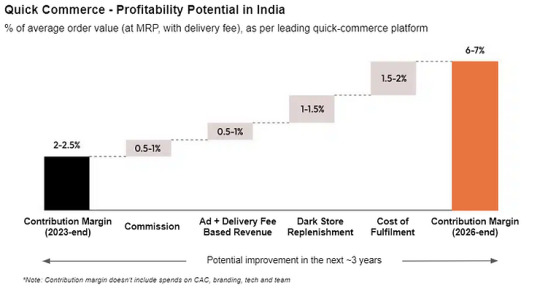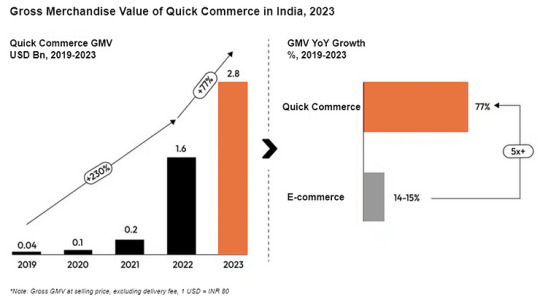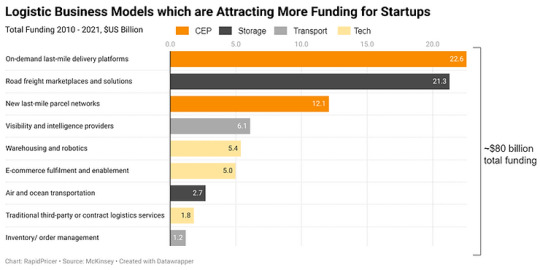#retailanalytics
Text
Know about retail analytics!
Retail analytics is the process of providing analytical data on inventory levels, supply chain movement, consumer demand, sales, etc. that are crucial for making marketing, and procurement decisions.
By giving meaningful insights into customer behavior, retail analytics assist in bolstering the relationship between a store and its visitors. It allows the retailer to get the right information across to the right recipient to ensure a rewarding shopping experience for the buyer.
2 notes
·
View notes
Text
#xequalto#DataModeling#RetailAnalytics#BusinessIntelligence#DataDrivenDecisionMaking#RetailSuccess#DataAnalysis#ProjectManagement#DataScience#RetailLoyaltyProgram#BI
0 notes
Photo

Discover the inspiring success stories of our data science alumni who are transforming industries and shaping the future. From healthcare to finance, learn how our graduates are making a difference with their innovative solutions.
0 notes
Text
#ERPNext#RetailBusiness#SigzenTechnologies#InventoryManagement#RetailSolutions#PointOfSale#CustomerRelationshipManagement#OrderManagement#MultiChannelRetailing#FinancialManagement#RetailAnalytics#SupplierManagement#EmployeeManagement#CustomizableDashboards#BusinessGrowth#RetailEfficiency#RetailTechnology#ERPSoftware#RetailTransformation#RetailInnovation
1 note
·
View note
Text
Seizing the Retail Revolution with Promotion and Campaign Analytics
Originally Published on: Quantzig Improve Retail Promotions with Promotion and Campaign Analytics
In the dynamic realm of retail, where innovation is the currency of success, Promotion and Campaign Analytics emerge as the heralds of a new era. These tools, not merely additions but essential pillars of strategy, empower retailers to navigate the labyrinthine landscape of consumer preferences and market dynamics with finesse and foresight.
Unlocking Potential Through Precision
The integration of advanced analytics platforms like IBM Planning Analytics and AI-infused forecasting algorithms transcends conventional wisdom, propelling retailers into a realm of unparalleled precision. Armed with insights gleaned from historical data and real-time market intelligence, retailers sculpt promotions with surgical precision, ensuring every effort resonates profoundly with its intended audience.
Adapting to the Rhythm of Change
In the heartbeat of retail evolution, agility is paramount. Promotion and Campaign Analytics provide the compass by which retailers navigate the ever-shifting tides of market trends and consumer behaviors. With swift adaptation fueled by data-driven insights, retailers remain not just reactive but proactive, anticipating the needs and desires of their customers before they arise.
A Symphony of Personalization
At the core of retail success lies the art of personalization. Promotion and Campaign Analytics enable retailers to orchestrate tailored experiences that resonate deeply with individual consumers, fostering not just transactions but relationships built on trust and loyalty.
Forging Ahead with Clarity
In the absence of robust analytics, retailers stumble blindly, shackled by inefficiencies and missed opportunities. Promotion and Campaign Analytics illuminate the path forward, empowering retailers to make informed decisions and allocate resources effectively, thereby maximizing their competitive edge in a crowded marketplace.
Embracing the Future
As we stand on the precipice of retail transformation, let us embrace the power of Promotion and Campaign Analytics as more than mere tools, but as catalysts for innovation and growth. By harnessing their transformative potential, retailers embark on a journey toward unparalleled success, where every promotion is a step closer to realizing their vision of retail excellence.
In conclusion, let us seize this opportunity to redefine the retail landscape, guided by the luminous beacon of Promotion and Campaign Analytics, towards a future where success is not just achieved, but reimagined.
Contact us.
0 notes
Text

Why Assortment Planning is Important?
A careful selection of products for the retail market can maximize sales for the retailer. This careful selection is Brand's best Assortments created per channel. Assortments should carry all images with all values. And while doing that, if the product marketing team can thoroughly analyze margins, IMUs, and decide targets, it gets genuine. That is where Visulon’s data-driven, 3D-supported, and AI-induced Assortments make the final difference.
#RetailSuccess#ProductAssortments#SalesOptimization#BrandAssortments#RetailStrategy#DataDrivenRetail#AIinRetail#Merchandising#RetailMarketing#VisulonTechnology#3DAssortments#IMUAnalysis#MarginOptimization#RetailEfficiency#RetailInnovation#SmartMerchandising#RetailTech#MaximizingSales#RetailAnalytics#RetailInsights
0 notes
Text
Industrial Zones Video Analytics
AvidBeam Technologies offers advanced video AI analytics solutions that are designed to provide actionable insights and enhance safety across a wide range of industries.
Industrial Zones Video Analytics
#trafficviolation#personalprotectiveequipmentdetection#smartcities#intelligenttransportationsystems#smartcommunities#oilandgasanalytics#retailanalytics#railwayvideoanalytics#hotelvideoanalytics#datacenteranalytics#publicparkvideoanalytics#portsvideoanalytics#smartbuildings#bankingvideoanalytics#industrialzonesvideoanalytics
0 notes
Text
The Retail Battleground: Brick-and-Mortar vs. E-commerce and the Rise of Instant Delivery

Written By: Gargi Sarma
Introduction:

Figure 1: Growth Comparison of Retail Sectors, WorldWide (2015 - 2027)
Global Views on Brick-and-Mortar, E-commerce, and Quick Commerce

Figure 2: Estimated Value of the In-Store and E-Commerce Retail Sales Worldwide from 2022 and 2026
Remarkably, brick-and-mortar sales growth outpaced e-commerce growth for the first time in 2021 (Forbes, 2022). This demonstrates how much customers still want the in-person purchasing experience. But physical establishments run the risk of slipping behind if they don't adjust to the internet world, including by providing click-and-collect options.
In recent years, e-commerce has grown at an exponential rate. Global e-retail sales are predicted by Statista to reach USD 6.5 trillion by 2023, making up more than 22% of all retail sales. In emerging nations like India, where smartphone usage and internet penetration are rising quickly, this trend is especially noticeable.
Instant Delivery: A Revolution in Retail


Figure 4: GMV of Quick Commerce in India, 2023 (Source: Redseer) According to Redseer, by 2025, the rapid commerce market in India is expected to grow at a rate of 10-15 times faster than any other market, with a valuation of almost $5.5 billion. This will put it ahead of other markets, including China, in terms of the adoption of quick commerce.
Shifting Logistics and Delivery Investment Dynamics

Figure 5: Logistic Business Models Which are Attracting More Funding for Startups
Conclusion:
Businesses need to be competitive as the retail industry changes and adjusts to shifting consumer tastes and technological improvements. Although e-commerce and rapid delivery services have unheard-of development prospects, these business models' viability depends on tackling regional obstacles and making investments in creative solutions. Retailers may prosper in a world that is becoming more digitally and globally integrated by embracing innovation and comprehending the distinctive dynamics of various markets.
About RapidPricer
RapidPricer helps automate pricing and promotions for retailers. The company has capabilities in retail pricing, artificial intelligence and deep learning to compute merchandising actions for real-time execution in a retail environment.
Contact info:
Website: https://www.rapidpricer.com/
LinkedIn: https://www.linkedin.com/company/rapidpricer/
Email: [email protected]
#retailtrends hashtag#ecommerce hashtag#brickandmortar hashtag#instantdelivery hashtag#logistics hashtag#retailinnovation hashtag#retailtech hashtag#digitaltransformation hashtag#consumerbehavior hashtag#globalretail hashtag#marketinsights hashtag#retailindustry hashtag#futureofshopping hashtag#onlineretail hashtag#physicalretail hashtag#supplychain hashtag#techinretail hashtag#retailinvestment hashtag#retailers hashtag#startupinvestment hashtag#retailanalytics hashtag#digitalretail hashtag#shoppingtrends hashtag#retailstrategy hashtag#retailevolution hashtag#economictrends hashtag#retailsolutions hashtag#retailoptimization
0 notes
Text
Heat-mapping Retail Stores with Xpandretail Solutions
Boost your retail business with Xpandretail's Heat-Mapping Solutions! 📊🔥
Uncover customer behavior patterns, optimize your store layout, and enhance the shopping experience. 🏬✨
Maximize sales and customer satisfaction with data-driven insights. Get started with Xpandretail today! 💪💼
Click to schedule a demo: https://xpandretail.com/contact/

2 notes
·
View notes
Text

Retail analytics can help retailers to decrease complexity within the supply chain by reducing product variations or by discontinuing less profitable or high complexity SKUs.
This involves 3 simple steps: SKU Classification, SKU Segmentation and SKU Rationalization.
Check how reducing complexity can increase certainty—and sales.
0 notes
Text
Unlocking Retail Insights: The Power of Retail Analytics
Retail analytics is transforming the way retailers understand consumer behavior, optimize operations, and drive business growth. By leveraging data from various sources such as POS systems, customer loyalty programs, and online transactions, retail analytics provide valuable insights into customer preferences, purchasing patterns, and market trends.
Through advanced analytics techniques such as predictive modeling, sentiment analysis, and demand forecasting, retailers can make data-driven decisions to improve inventory management, pricing strategies, and personalized marketing initiatives. As competition intensifies and consumer expectations evolve, retail analytics is becoming essential for retailers to stay competitive, enhance customer experiences, and achieve sustainable success in the digital age. #RetailAnalytics #DataAnalytics #RetailInsights #CustomerBehavior #PredictiveAnalytics #DemandForecasting #PersonalizedMarketing #BusinessIntelligence #RetailTrends #DataDrivenDecisions #CustomerExperience #DigitalRetail #BigData #Ecommerce #FutureOfRetail
0 notes
Text
Retail Data Insights: Unlocking the Power of Information
In today's data-driven retail landscape, companies are leveraging vast amounts of information to gain critical insights and drive decision-making. This blog delves into several key areas where retail businesses are harnessing data to derive powerful insights and enhance reporting capabilities.
Customer Behavior Analysis
Retailers are combining point-of-sale data with loyalty program information to create comprehensive customer profiles. This multifaceted analysis can reveal:
Basket Composition: Identifying frequently paired items helps retailers understand common purchasing patterns, enabling strategic product placement and bundling to boost sales.
Purchase Frequency: By understanding how often customers shop and the timing of their purchases, retailers can tailor marketing efforts and optimize inventory levels to meet demand.
Price Sensitivity: Analyzing how different customer segments respond to promotions allows retailers to implement personalized pricing strategies and improve conversion rates.
These insights are invaluable for predicting customer churn based on changes in shopping patterns, enabling targeted retention strategies that enhance customer loyalty and lifetime value.
Inventory Management
Efficient inventory management is crucial in retail, and data plays a pivotal role in achieving this. Real-time dashboards provide visibility into stock levels across multiple locations, offering insights such as:
Stock Turnover Rates by Product Category: Understanding how quickly products sell helps retailers maintain optimal inventory levels, reducing the risk of stockouts or overstock situations.
Seasonal Demand Fluctuations: Analyzing historical sales data allows retailers to anticipate seasonal trends and adjust inventory accordingly.
Optimal Reorder Points: Setting precise reorder points minimizes stockouts and excess inventory, ensuring that popular items are always available while reducing carrying costs.
Advanced retailers are leveraging machine learning algorithms to predict demand for new product launches, improving the accuracy of initial stock allocations and reducing the likelihood of excess inventory.
Store Performance Metrics
Comparing performance across different store locations yields valuable insights that drive operational improvements. Key metrics include:
Sales per Square Foot: Measuring revenue generated per square foot helps retailers optimize store layouts and product placement for maximum profitability.
Conversion Rates: Understanding the percentage of store visitors who make a purchase provides insights into customer behavior and the effectiveness of sales strategies.
Average Transaction Value: Analyzing the average amount spent per transaction helps retailers identify opportunities to increase sales through upselling and cross-selling.
Staff Productivity: Monitoring staff performance metrics enables retailers to implement best practices and training programs that enhance customer service and operational efficiency.
By identifying top-performing stores and analyzing their practices, retailers can implement proven strategies across their network, potentially increasing same-store sales and overall profitability.
Marketing Campaign Effectiveness
Data allows retailers to measure the impact of marketing efforts across multiple channels, providing a holistic view of campaign performance. Key areas of analysis include:
Email Campaigns: Tracking open rates, click-through rates, and conversion rates helps retailers refine their email marketing strategies for maximum effectiveness.
Social Media Ads: Analyzing engagement metrics and ROI for social media advertising campaigns enables retailers to allocate budgets more efficiently and target the right audience.
In-Store Promotions: Evaluating the success of in-store promotions through sales lift and customer feedback helps retailers design more impactful promotional activities.
Mobile App Notifications: Monitoring the effectiveness of push notifications in driving app engagement and sales provides insights into customer preferences and behavior.
By analyzing conversion rates and ROI of different marketing channels, companies can optimize their marketing spend, enhance customer engagement, and increase overall campaign effectiveness.
Pricing Optimization
Price elasticity is a complex but crucial aspect of retail strategy. Advanced analytics can help retailers in several ways:
Identifying Price Thresholds: Understanding the price points at which demand significantly changes allows retailers to set competitive prices that maximize sales and profitability.
Cross-Price Elasticity: Analyzing the relationship between the prices of related products helps retailers optimize their pricing strategies and avoid cannibalizing sales.
Markdown Strategies: Implementing data-driven markdown strategies for clearance items ensures that retailers clear inventory efficiently without sacrificing too much margin.
Some retailers are adopting dynamic pricing for e-commerce platforms, leveraging real-time data to adjust prices based on demand, competition, and other factors. This approach can lead to significant increases in profit margins and enhanced competitiveness.
Supply Chain Analytics
Efficient supply chain management is critical for retail operations, and data-driven insights are key to achieving this. End-to-end visibility of the supply chain provides valuable information on:
Supplier Performance Metrics: Evaluating supplier reliability, lead times, and quality helps retailers build stronger partnerships and negotiate better terms.
Transportation Costs and Efficiency: Analyzing logistics data allows retailers to optimize shipping routes, reduce transportation costs, and improve delivery times.
Warehouse Utilization Rates: Monitoring warehouse operations helps retailers identify inefficiencies, streamline processes, and maximize storage capacity.
By identifying bottlenecks and inefficiencies, retailers can reduce lead times, cut logistics costs, and enhance overall supply chain performance.
Customer Sentiment Analysis
Grasping customer sentiment is essential in today's digital era. Text analytics projects can mine insights from various sources, including:
Customer Reviews: Analyzing reviews helps retailers identify common themes and areas for improvement, enhancing product development and customer service.
Social Media Mentions: Monitoring social media activity provides real-time insights into customer perceptions and trends, enabling timely responses to issues and opportunities.
Customer Service Interactions: Evaluating interactions with customer service teams helps retailers understand pain points and improve service quality.
By categorizing and quantifying customer feedback, retailers can quickly identify emerging issues, make data-driven decisions, and improve customer satisfaction.
Conclusion
The wealth of data available to retail companies today is truly staggering. The key lies in asking the right questions and using appropriate tools to extract meaningful insights. Data-driven decision-making has the power to transform retail operations, from enhancing the customer experience to optimizing supply chain efficiency.
As advancements in AI and machine learning continue, the potential for data to drive retail innovation seems limitless. Retailers who effectively harness these insights will be well-positioned to thrive in an increasingly competitive marketplace, turning information into a powerful asset for growth and success.
Contact Us For More Details Or Email Us @ [email protected]
#xequalto#DataModeling#RetailAnalytics#BusinessIntelligence#RetailData#DataDriven#CustomerInsights#CustomerBehavior#InventoryManagement#StorePerformance#MarketingAnalytics#PricingOptimization#SupplyChainAnalytics#RetailInnovation#MachineLearning#AIInRetail#DataScience#RetailStrategy#Ecommerce#RetailGrowth
0 notes
Text

The predictive analysis gives a clear insight into the already available data. It informs the responsible individuals about the probable outcome and events, thus preparing a timely action plan beforehand.
Retailers can increase sales, identify better-selling products, optimize the existing supply chain, and become more efficient. Let us know about the ten ways retail predictive analysis can improve your business.
https://wersel.io/predictive-analytics-for-retail
1 note
·
View note
Photo

Business intelligence is continuously capturing the Retail market.
To know more visit https://katoai.co/
1 note
·
View note
Text
#RetailManagement #WholesaleOperations #InventoryControl #PointOfSale #SupplyChainOptimization #OmniChannelRetail #InventoryManagement #ERPImplementation #RetailTech #WholesaleSoftware #CRMIntegration #ECommerceIntegration #SupplyChainManagement #RetailAnalytics #CustomerExperience #OrderFulfillment #WarehouseManagement #BusinessIntelligence #RFIDTechnology #OmniChannelStrategy
1 note
·
View note
Text
Maximizing Potential: The Unrecognized Edge for Retail Marketplace Sellers in Retail Media
Originally Published on: Quantzig Maximizing Potential: The Unrecognized Edge for Retail Marketplace Sellers in Retail Media
Key Takeaways
A notable US-based Retail client experienced a significant 5% revenue boost, accompanied by a 15% improvement in cost savings, and refined media strategies upon implementing Quantzig’s advanced Retail Media Analytics Solutions.
The client encountered challenges such as stagnant market share growth amid regional competition, insufficient visibility into campaign effectiveness, and the absence of a structured ROI measurement framework.
Quantzig proposed a solution comprising a framework to distinguish between natural revenue and marketing-influenced revenue, introduced a Multi-Touch Attribution solution for assessing the role and ROI of each marketing channel, and developed models for quantifying campaign features and conducting What-If analyses to optimize future investment strategies.
Through our Marketing Decision Management (MDM) framework, we assist clients in effectively leveraging marketplace media to enhance brand activations, broaden brand awareness, and target desired audiences, providing expertise in platform selection, budget allocation, and campaign performance analysis.
Introduction
Retail marketplace media encompasses digital advertising across retail sites, marketplaces, and applications, utilizing first-party data held by retailers about their customers. Leading retailers have expanded their retail media networks (RMNs), offering brands a platform to target high-intent shoppers. The surge in these networks is driven by advertisers seeking robust measurement capabilities amidst decreasing digital media expenditures and evolving data regulations.
Marketplace sellers are embracing this trend as retail media presents a significant opportunity to engage and influence customers. By proactively embracing it and employing advanced analytics practices, retail marketplace sellers can unlock substantial business growth potential. This case study illustrates how Quantzig’s Retail Media Analytics Solution assisted a leading US-based client in achieving a 5% increase in revenue, a 15% improvement in cost savings, and an enhanced media strategy.
#RetailMedia #Analytics
Quantzig Success Story
Client Details: A leading US-based client with a presence across more than 25 states
Challenges Faced by the Client: The client grappled with challenges such as stagnant market share growth amidst regional competition, insufficient visibility into campaign effectiveness, and the absence of a structured ROI measurement framework.
Solutions Offered by Quantzig: Quantzig proposed a solution comprising a framework to distinguish between natural revenue and marketing-influenced revenue, introduced a Multi-Touch Attribution solution for assessing the role and ROI of each marketing channel, and developed models for quantifying campaign features and conducting What-If analyses to optimize future investment strategies.
Impact Delivered: The client witnessed a notable 5% increase in revenue, a 15% enhancement in cost savings, and an improved media strategy.
Client Overview
In a fiercely competitive landscape, a leading US-based client with a presence across more than 25 states faced formidable challenges in augmenting its market share. Hindered by stiff competition from regional players, the client grappled with ineffective marketing strategies and lacked a robust framework for measuring campaign impact and identifying optimal channels. To overcome these hurdles and drive sustainable growth, the client turned to Quantzig, a renowned analytics and advisory firm, for innovative solutions.
Contact us.
0 notes